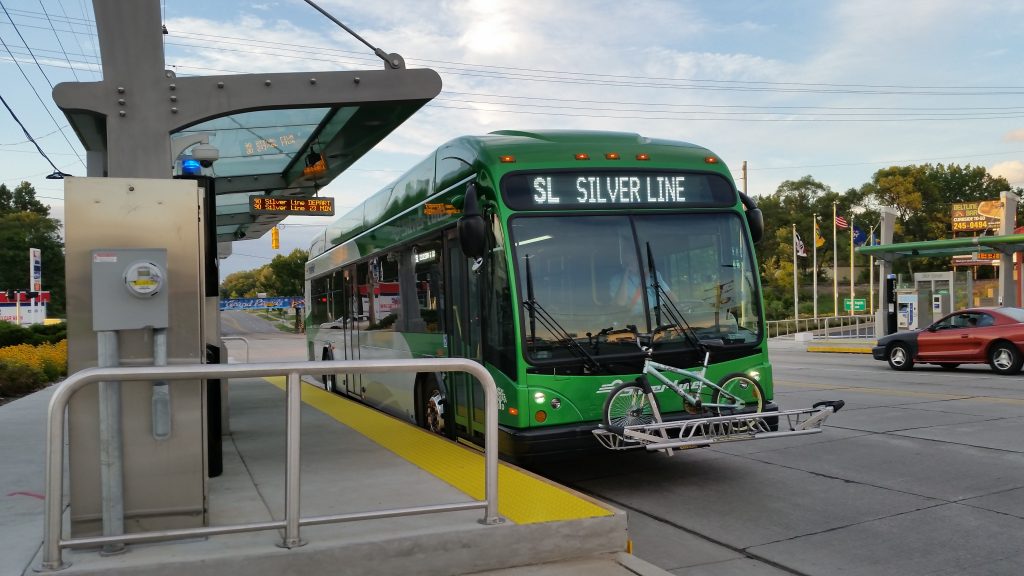Bus rapid transit (BRT) has gained momentum in the United States, especially in Midwest cities like Cleveland and Chicago. Detroit is looking to be added to the list, but it won’t be the first city in Michigan to adopt BRT. Grand Rapids has held that title since 2014.
The Silver Line is a BRT corridor running 9.6 miles north-south through the center of the city on Division Ave. between Michigan St. to 60th St., connecting downtown Grand Rapids to the South Suburbs.
Features include 34 sheltered bus stations, off-board payment kiosks, 15-inch raised platforms, transit signal priority, Wi-Fi and designated bus-only lanes where cars are prohibited during rush hour, except to make right-hand turns.
The Silver Line — which is located alongside US Route 131 — serves an estimated 2,300 riders per day. To attract new transit riders, Grand Rapid’s transit agency offers free parking at 60th St.
Estimated time of travel between 60th St. and Michigan St. is twenty-seven minutes, similar to travel speeds on US 131 without any traffic.
In rush hour traffic, riding the Silver Line carries the biggest time savings and eliminates the need to find parking downtown.
Students from colleges located downtown and people who work in the downtown medical district are among the riders who use the Silver Line. Approximately 300 Spectrum Health employees use it for commuting.
The line has attracted the typical anti-tax, NIMBY opposition many transit expansion projects run into across the U.S. Kent County Taxpayers Alliance have been highly critical since the beginning, believing it’s a waste of taxpayer money and claiming it wouldn’t be as efficient as the already existing local bus services.
With growing ridership, Grand Rapids’ transit agency is optimistic the Silver Line will help spur economic development in the Division corridor, but realizes the process will take time. Research shows BRT drives development in corridors where it’s been built.
Similar to Grand Rapids, Chicago’s investment in the Loop Link paves the way for more BRT investment, especially along Ashland.
BRT on Ashland would be the city’s first rapid transit line that doesn’t feed the Loop’s hub and spoke system. The Ashland BRT would greatly increase bus speed and reliability through the corridor.
This is the fourth post in a monthly blog series on Bus Rapid Transit (BRT) in the U.S. Learn more about our BRT organizing and contact us to get involved.
Photo courtesy of The Rapid.

